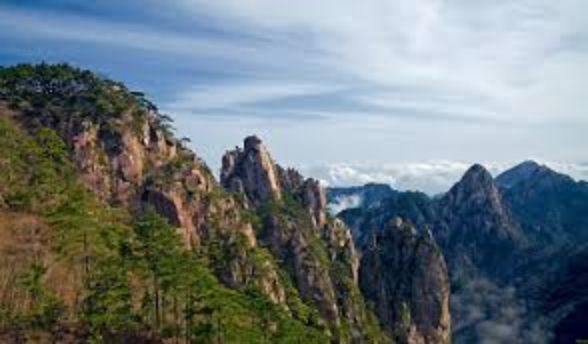
The Historical and Cultural Tapestry of Huangshan's Bright Summit
A Beacon Through Time: Unveiling the Story of Huangshan's Pinnacle
Standing as the second highest peak amongst Huangshan's majestic range, Bright Summit (光明顶) is more than just a geographical wonder. It's a place where history whispers through ancient stones, where legends intertwine with breathtaking views, and where the echoes of cultural significance resonate with every sunrise.
From Humble Beginnings to Sacred Ground
-
Early History and Natural Splendor: Long before its name was etched in tales, Bright Summit existed as a testament to nature's artistry. Its formation, a result of millennia of geological activity, shaped its dramatic cliffs and unique rock formations. Early inhabitants, drawn by the mountain's spiritual aura, likely held the summit in high regard, recognizing its connection to the heavens.
-
Buddhist Influence and the Naming of Bright Summit: The arrival of Buddhism in China during the Tang Dynasty brought with it a wave of monastic orders seeking refuge and enlightenment amidst Huangshan's peaks. It was during this time that Bright Summit received its evocative name, believed to be inspired by the "Eternal Lamps of Wisdom" - a concept central to Buddhist teachings.
-
Literary Legacy and Artistic Inspiration: Over the centuries, Bright Summit served as a muse for poets, painters, and scholars, all captivated by its ethereal beauty. Writings from the Tang, Song, and Ming Dynasties depict the summit as a place of unparalleled grandeur, its misty peaks inspiring countless verses and brushstrokes. Artists, attempting to capture the essence of its beauty, immortalized Bright Summit in iconic landscape paintings, solidifying its place in Chinese art history.
A Convergence of Culture and Heritage
-
Taoist Connections and the Search for Harmony: While Buddhism left an undeniable mark on Bright Summit, Taoism also found a home among Huangshan's heights. Taoist hermits, seeking a path to immortality amidst nature's embrace, were drawn to the summit's serene energy. This confluence of Taoist and Buddhist influences created a unique spiritual atmosphere, a palpable sense of balance and harmony.
-
Folklore and Legends: Tales Woven in Mist: As with many ancient places, Bright Summit is enveloped in a shroud of local folklore and legends. Stories of immortals residing among the peaks, of mythical creatures guarding hidden paths, and of emperors seeking solace and wisdom on the summit, have been passed down through generations, adding a layer of mystique to the already captivating landscape.
-
Modern Significance and the Enduring Allure: Today, Bright Summit remains a place of pilgrimage for those seeking natural splendor and cultural immersion. Hikers from around the world make the ascent, following in the footsteps of poets and monks, drawn by the promise of breathtaking sunrises and a glimpse into China's rich heritage.
Experiencing Bright Summit: A Journey for the Senses
Visiting Bright Summit is more than just reaching a destination; it's an immersive journey into the heart of Chinese history and culture. It's a place to witness nature's grandeur, to reflect on the passage of time, and to connect with the spiritual legacy that permeates every inch of this sacred mountain.
FAQs:
Q1: What is the best time of year to visit Bright Summit?
A: Spring and autumn generally offer the most pleasant weather conditions for hiking and sightseeing.
Q2: Are there accommodations available on Bright Summit?
A: Yes, there is a hotel located on the summit offering basic amenities and stunning views.
Q3: What should I bring with me when hiking to Bright Summit?
A: Be sure to pack layered clothing, sturdy hiking shoes, plenty of water, sunscreen, and a hat.